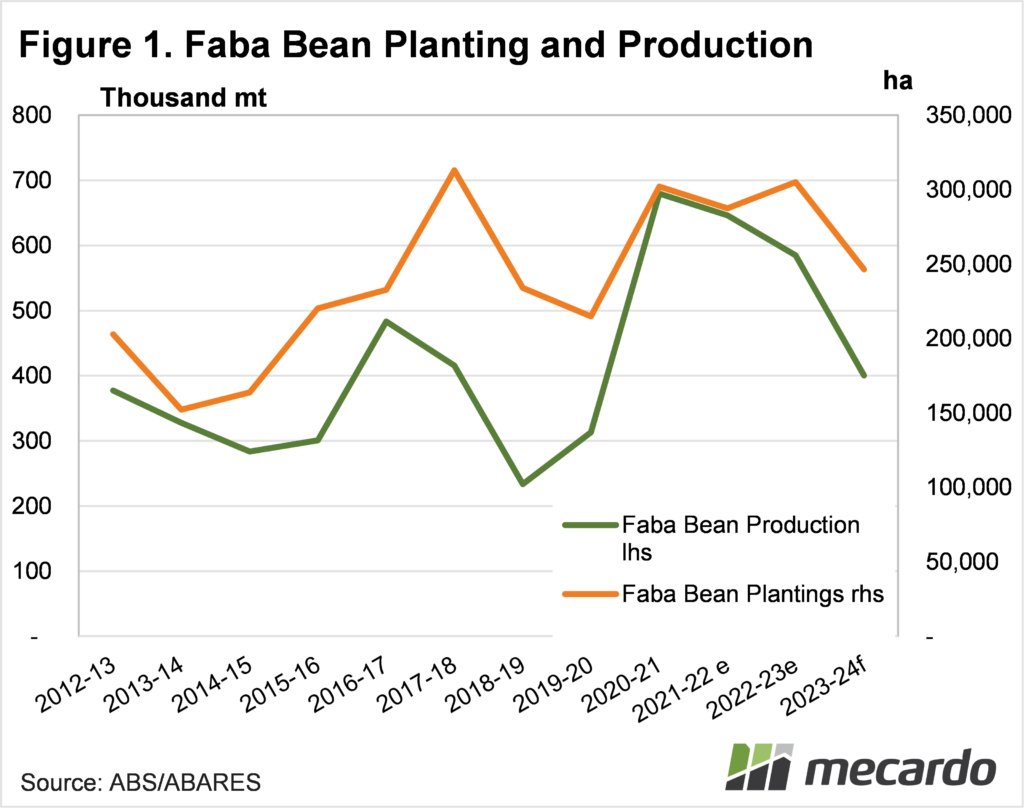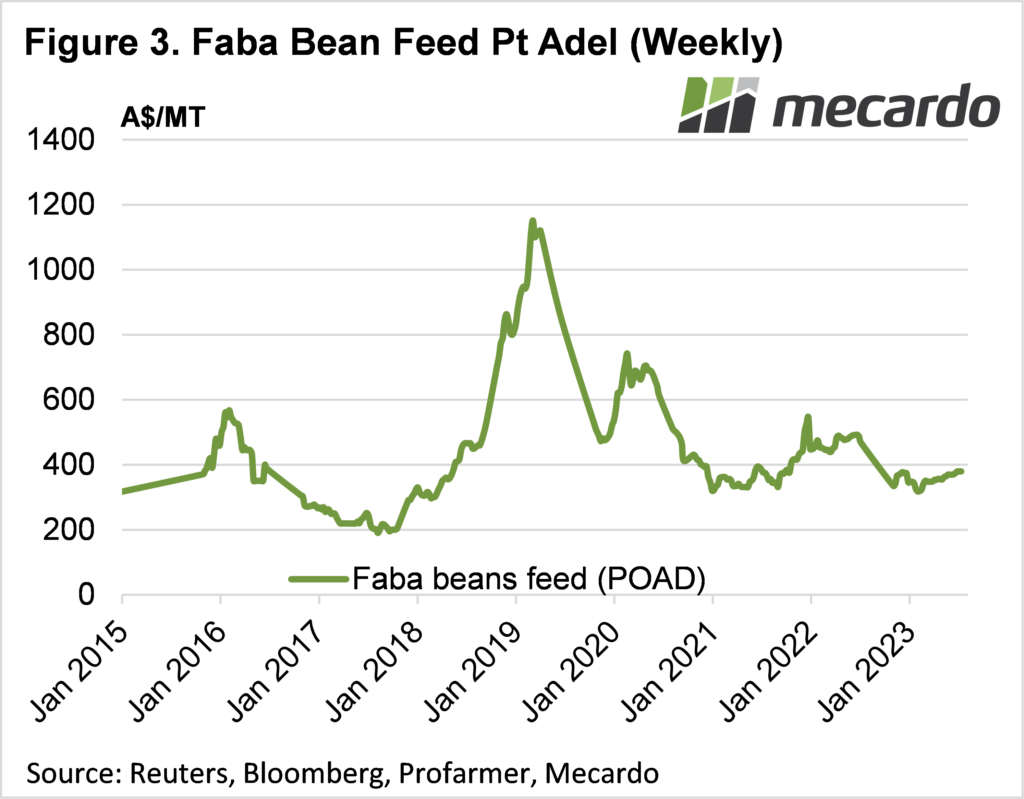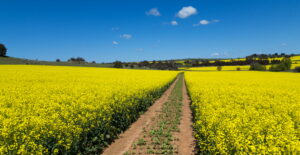Faba beans have become a very popular crop in the rotation in recent years. Plantings of faba beans have been consistently strong over the past three years, and good growing conditions have led to strong supply and weaker prices. The Australian Bureau of Agricultural and Resource Sciences (ABARES) June Crop Report suggests we might see tighter supply in the coming year.
Figure 1 shows that faba bean plantings can be highly variable. Over the past 10 years, we’ve seen a low of 164,000 ha and a high of 313,000 ha (Figure 1). Faba bean production is even more variable. During the 2018-19 drought harvest, just 233,000 tonnes were produced, with a high of 678,000 tonnes coming in 2020-21.
South Australia produced a record 300,000 tonnes crop of beans last year, and this year it is expected to decrease by more than half (Figure 2). With plantings reduced, and a more average season this year the supply of beans will be cut. Australian total faba bean production is forecast to decline 31.5% from 2022-23, and 38% from 2020-21. Forecast faba bean production for 2023-24 is expected to be the lowest since 2019-20, and lower than the 10-year average.
Faba beans are not a major commodity, but in South Australia and Victoria, they are an important break crop, and a valuable feed source when beans don’t make export grade. Prices are a factor of supply, export demand and local feed demand.
Faba bean prices have been relatively steady in recent years. At least compared to wheat and canola. Since coming off the extreme highs of 2019 faba bean prices have found a base between $300 and $450/t at Port Adelaide (Figure 3).
Comparing supply and price, we can see that the big crop of 2020-21 took the heat out of prices, and with subsequent strong crops, they haven’t regained the highs.
Faba beans are used to boost protein in feed mixes, or fed straight when they are cheap enough relative to cereals like in the last couple of years. Canola meal is the other major high protein feed supplement, and while canola has come off its highs, prices are still strong relative to beans.
What does it mean?
At least the outlook for bean prices in the local market is positive this year. Lower production and strong canola prices are two factors that could see prices rise if the small crop comes to fruition. Obviously much depends on international demand for beans, but at a local scale, beans look like good buying now.
Have any questions or comments?
Key Points
- After three strong years, faba bean production is expected to decline in 2023-24.
- Lower plantings and a drier season in South Australia are the major factors in lower bean production.
- Faba bean prices have been relatively low in recent years, with some upside on lower production.
Click on figure to expand
Click on figure to expand
Click on figure to expand
Data sources: USDA, Reuters, Mecardo















